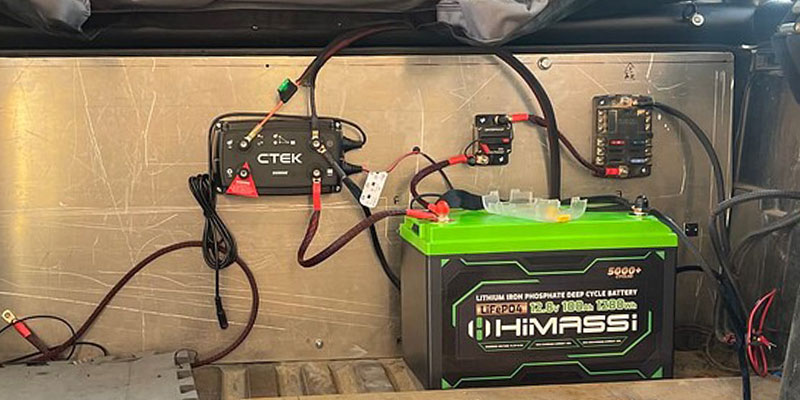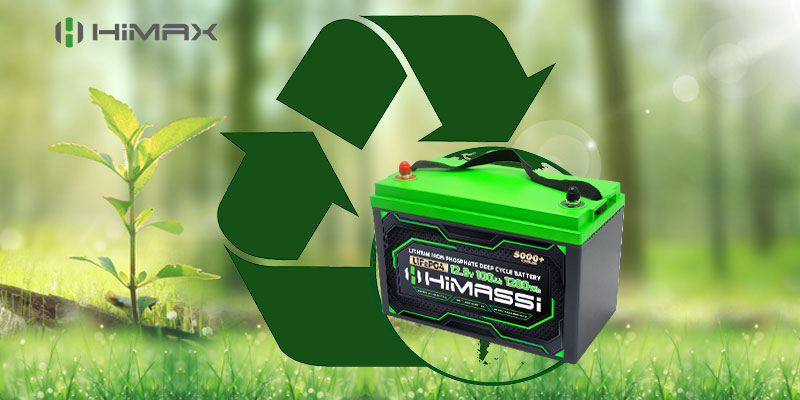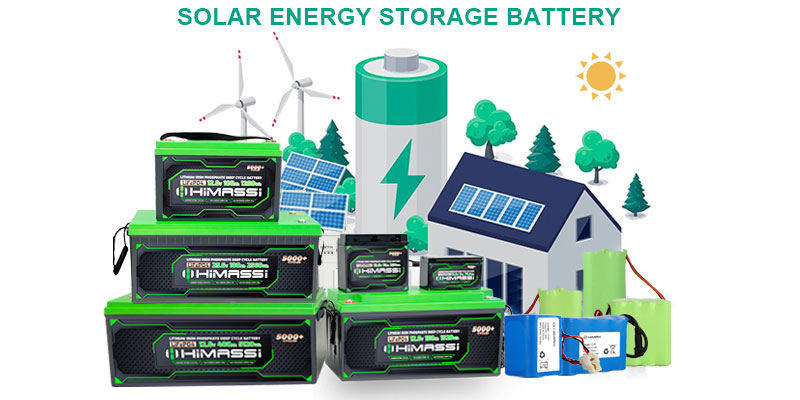How long do solar batteries last
Comprehensive Analysis of Solar Battery Lifespan and Optimization Strategies
Solar batteries are crucial for harnessing and utilizing solar energy efficiently. Understanding the intricacies of their lifespan and operational parameters is key to maximizing investment in solar technologies. Let’s delve deeper into each factor affecting the lifespan of solar batteries and explore how advanced technologies from Himax Electronics enhance their performance and longevity.
Detailed Examination of Battery Types and Their Lifespan
- Lead-Acid Batteries:
- Overview and Usage: Lead-acid batteries have been a staple in solar energy systems due to their low upfront cost and availability. Typically used in off-grid solar setups, these batteries are known for their reliability in less demanding cyclic applications.
- Lifespan Factors: The lifespan of lead-acid batteries in solar applications can range widely from 5 to 10 years, influenced heavily by their depth of discharge and the care with which they are maintained. Regular maintenance, including water level checks and ensuring they are kept fully charged during periods of non-use, is crucial.
- Wear and Tear: These batteries suffer from sulfation—buildup of lead sulfate crystals—which occurs more rapidly if the battery is not regularly brought to a full charge. Preventative measures include using a battery desulfator and ensuring adequate charging time.
- Superior Performance and Adoption: Gaining popularity in recent years, lithium-ion batteries offer significant advantages over lead-acid, including greater depth of discharge, longer lifespan of up to 15 years, and minimal maintenance requirements. Their chemistry allows for more efficient energy storage and retrieval, making them ideal for more intensive solar applications.
- Durability and Efficiency: The robustness of lithium-ion batteries against frequent and deep discharges translates into a longer operational lifespan. These batteries typically maintain 80% of their capacity even after thousands of charge cycles.
- Cost vs. Benefit Analysis: While the initial cost may be higher than lead-acid batteries, the long-term savings in maintenance and replacement costs can make lithium-ion batteries a more economical choice over time.

Impact of Depth of Discharge on Battery Health
- Understanding Depth of Discharge:
- Technical Insights: Depth of Discharge (DoD) is a critical determinant of battery life. It refers to the percentage of the battery that has been used relative to its total capacity. For instance, a DoD of 50% means that half of the battery’s capacity is utilized before recharging.
- Optimal DoD Settings: Each battery type has an optimal DoD to balance between usable energy output and longevity. For lead-acid, it’s often around 50%, whereas modern lithium-ion can regularly handle up to 80% DoD without significant wear.
- Managing DoD for Extended Life:
- Strategic Cycling: Avoiding full discharges and instead operating within a recommended DoD range can significantly prolong any battery’s life. Implementing partial charge cycles can also help maintain battery health.
- Advanced Charging Techniques: Employing smart charging solutions that dynamically adjust the charging rate based on the battery’s usage, temperature, and remaining capacity can help maintain an optimal DoD.
Himax Electronics: Advancing Battery Longevity and Safety
- Innovative Battery Management Systems:
- Cutting-Edge Technology: Himax Electronics develops sophisticated Battery Management Systems that precisely control charge states and optimize DoD usage to extend the battery’s lifespan. These systems use algorithms to predict and adapt to usage patterns, ensuring the battery operates within the safest and most efficient parameters.
- Safety Innovations: Himax’s BMS technology incorporates features such as temperature control and voltage regulation, which are crucial for preventing overheating and voltage spikes that can damage batteries.
- Sustainability and Environmental Focus:
- Green Technology: Himax is dedicated to reducing the environmental impact of their products. Their batteries are designed to be highly efficient and durable, which contributes to less frequent replacements and a lower overall environmental footprint.
- Recycling Initiatives: Himax actively participates in and supports battery recycling programs to ensure that all components are responsibly recycled, minimizing waste and promoting the reuse of materials.
Himax Electronics: Pioneering Battery Solutions for the Solar Industry
Himax Electronics is not merely a participant in the battery market; it’s a trailblazer, especially in the field of solar battery(https://himaxelectronics.com/solar-battery/) technologies. Their commitment to innovation is not just about enhancing battery life but also about integrating smart technology to revolutionize how solar energy is stored and utilized.
Advanced Research and Development
- Next-Generation Solar Battery Solutions:
- High-Capacity Storage Systems: Himax is focused on developing high-capacity storage solutions that can efficiently handle the high-output energy production of modern solar panels. These systems are designed to store more energy, providing longer usage times and increased reliability during periods of low sunlight.
- Hybrid Systems: Recognizing the diverse needs of solar energy users, Himax develops hybrid battery systems that can integrate seamlessly with other forms of energy storage, enhancing flexibility in energy usage and optimizing efficiency.
- Material Innovation:
- Cutting-Edge Electrolyte and Electrode Materials: Himax invests heavily in the research of advanced materials that increase the energy density and reduce the charging time of solar batteries. This research not only improves performance but also contributes to the longevity and sustainability of the battery systems.

Commitment to Safety and Sustainability
- Robust Safety Protocols:
- Comprehensive Monitoring: Himax’s battery systems are equipped with state-of-the-art sensors and monitoring technologies that continuously assess the health and status of the battery. This proactive approach to monitoring helps prevent potential failures by addressing issues before they lead to system degradation or safety hazards.
- Regulatory Compliance: Himarking a strong emphasis on meeting and exceeding international safety and quality standards, Himax ensures that all of their solar battery products are rigorously tested and certified, providing assurance to consumers and stakeholders of their reliability and safety.
- Environmental Impact Reduction:
- Eco-Friendly Manufacturing Practices: Himax’s manufacturing processes are designed to minimize environmental impact. This includes reducing emissions and waste during the production process and using recycled materials whenever possible.
- End-of-Life Battery Management: Committed to the principles of a circular economy, Himax has established programs to take back used batteries for recycling or proper disposal, ensuring that the environmental footprint of their products is minimized throughout their lifecycle.
Conclusion: Himax Electronics Leading the Charge in Solar Battery Innovation
Himax Electronics stands out in the solar battery market not just for their technological advancements but for their holistic approach to integrating innovation, safety, and environmental responsibility. Their efforts are setting new standards in the industry, pushing forward the capabilities of solar energy storage solutions while ensuring they are safe and sustainable. Whether for residential, commercial, or industrial applications, Himax provides top-tier solar battery systems that offer long-term reliability, efficiency, and compliance with global environmental standards.
For anyone invested in the future of solar energy, whether a homeowner, business, or energy manager, Himax Electronics offers not just products but comprehensive energy solutions that lead to real-world benefits. Their ongoing commitment to innovation ensures that as solar technology evolves, Himax will be at the forefront, driving change and offering solutions that meet the challenges of modern energy needs..



